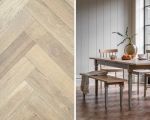- 1-Designing-Your-Ladder-Shelf
- 2-Choosing-Materials-and-Tools
- 3-Construction-Process-Step-by-Step
- 4-Enhancing-Style-and-Functionality
- 5-Real-Life-Examples-and-Advice
1. Designing Your Ladder Shelf
Building a DIY ladder shelf for your living room starts with a thoughtful design. Ladder shelves are known for their sleek, leaning frame that fits perfectly against a wall, providing both aesthetic appeal and practical storage. Begin by deciding the number of shelves you need based on what you want to display—books, plants, decorative items, or storage baskets.
Dimensions and Layout
Measure the available wall space carefully to ensure your ladder shelf fits comfortably without overwhelming the room. Typical ladder shelves taper upwards, so planning shelf depth and spacing is crucial to maintain stability and usability. Sketching your design helps visualize proportions and balance.
2. Choosing Materials and Tools
The choice of materials will affect both the durability and the style of your ladder shelf. Common options include pine, oak, or reclaimed wood, each bringing unique textures and finishes. For a modern look, consider smooth, painted wood or even metal accents.
Essential Tools
Gather tools such as a saw, drill, screws, measuring tape, sandpaper, clamps, and a level. A cordless drill makes assembly faster, while clamps help hold pieces securely during glue drying or screwing. Don't forget safety gear like goggles and gloves for protection.
3. Construction Process Step-by-Step
Follow these steps to build your ladder shelf:
1. Cut the Side Rails
Start by cutting two long side rails with a gentle lean angle. These rails support the shelves and define the shelf’s shape.
2. Cut the Shelves
Cut shelves of varying widths depending on your design. Typically, lower shelves are deeper while upper shelves are shallower.
3. Assemble the Frame
Attach the shelves to the side rails using screws and wood glue. Use a level to ensure each shelf is horizontal and evenly spaced.
4. Sand and Finish
Sand all surfaces smooth, removing rough edges. Apply paint, stain, or varnish based on your design preference and room décor.
4. Enhancing Style and Functionality
Consider adding hooks or small baskets to increase storage options. Integrating LED strip lights underneath shelves can highlight displayed items and create a cozy atmosphere. For added safety, secure the ladder shelf to the wall with brackets, especially if you have children or pets at home.
Choosing eco-friendly finishes and sustainably sourced wood also contributes to a healthier home environment and supports responsible craftsmanship.
5. Real-Life Examples and Advice
Emily, a homeowner in Seattle, shared her success story building a DIY ladder shelf to display her growing book collection and succulents. She found that customizing shelf depths based on her items made the design both practical and visually pleasing. Emily emphasized the importance of patience during sanding and the value of using quality wood for a sturdy result.
If you’re looking for inspiration and supplies, Improvement offers a wide range of materials and tools tailored for DIY projects like this ladder shelf. Their expert advice helped many beginners achieve professional-quality finishes without breaking the bank.








